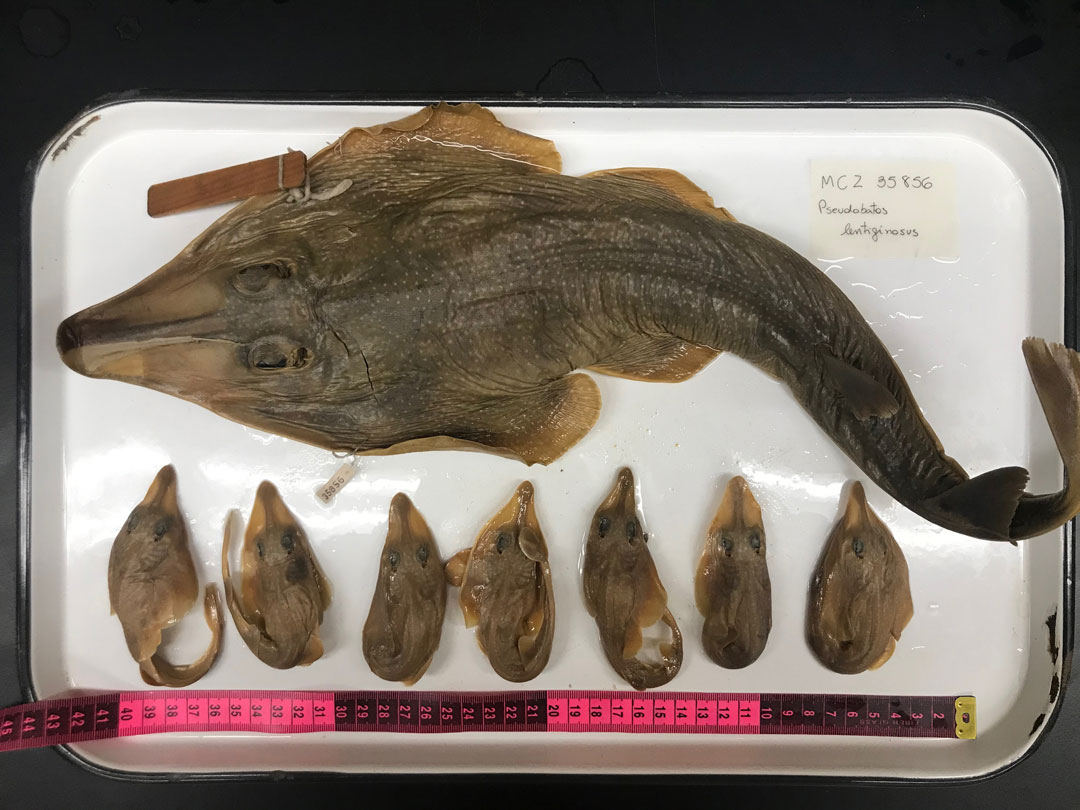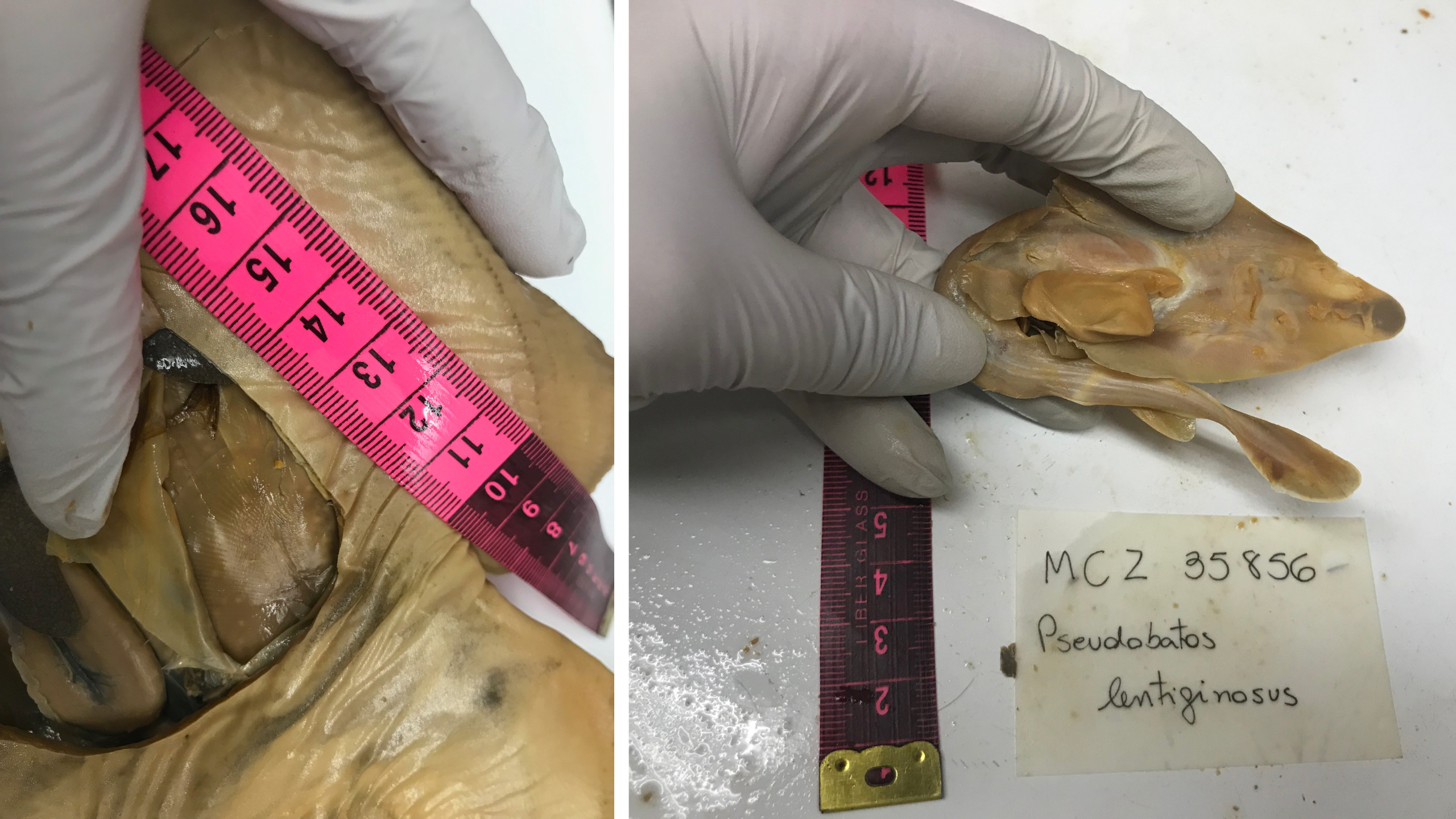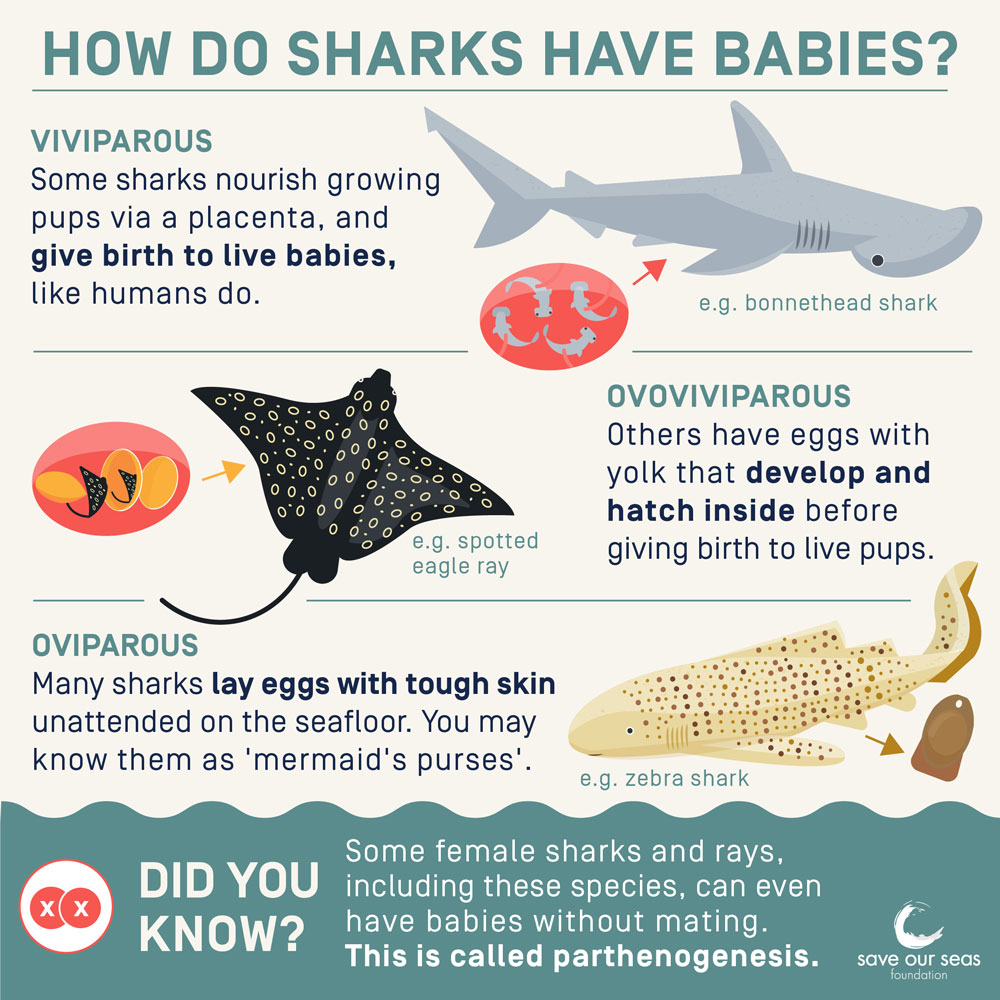Secretly pregnant for 81 years!
We all know that mammals give birth to their young, but did you know that some fish do that as well? The Chondrichthyes, or the cartilaginous fish, have a variety of reproductive strategies, some lay eggs (oviparity) and others give birth (viviparity and ovoviviparity) to their young – check the infographic at the bottom. In all cases, the newly hatched and the newborns are miniatures of the adults, there is no larval stage among the cartilaginous fish. A range of different pregnancy lengths is found among species, but this Atlantic guitarfish has the record!
Stored for over 80 years in the shelves of the Ichthyology Collection, at the Harvard Museum of Comparative Zoology (MCZ), a 577mm long female of the Atlantic guitarfish Pseudobatos lentiginosus was found to be pregnant. The round abdominal region caught the attention of the scientists who then confirmed the pregnancy using an x-ray. Collected on May 3rd, 1941, and since stored in a jar filled with 70% ethanol, this female was secretly pregnant for 81 years! Seven embryos were dissected out on May 10th, 2022, three males and four females. They were fully formed but still had some growing before reaching birth size, as indicated by the presence of an external yolk sac.

Mother & babies. Photo © Fernanda Rocha
Studying embryos is important for understanding prenatal development, deviations from the normality and, changes that occur in response to environmental pressures at different life-stages. However, embryos are relatively rare in scientific collections, the libraries of biodiversity, especially in good numbers and earliest stages of development. Who knows how many more embryos could be hidden in museum specimens whose pregnancy goes undetected like this Atlantic guitarfish in the MCZ?

Left: beginning of the dissection, ventral view, embryos still inside the uterus. Right: ventral view of one embryo, showing the yolk sac. Photos © Fernanda Rocha

